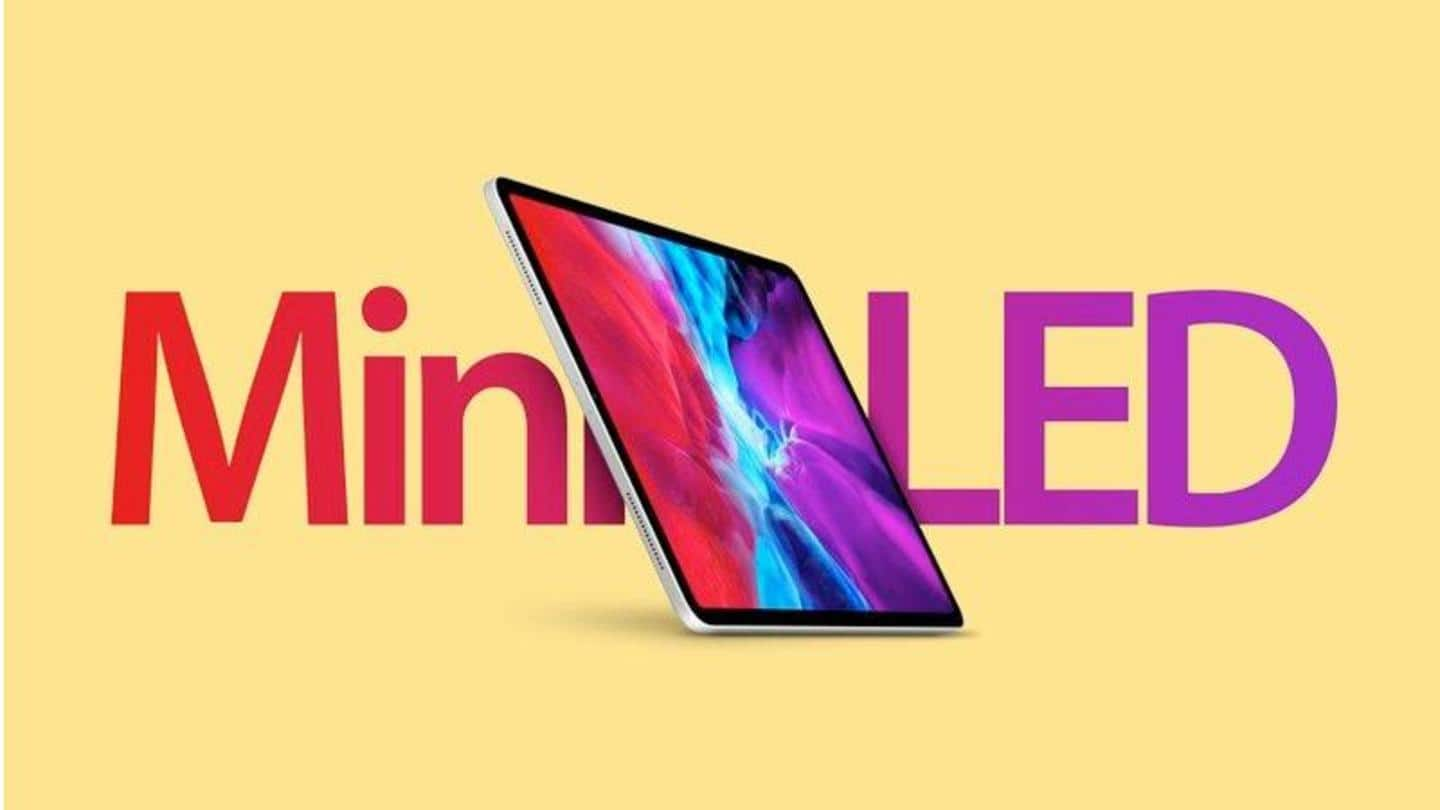
Apple may outfit 2021 iPad Pro with advanced MiniLED displays
What's the story
In a bid to reduce dependency on Samsung's OLED panels, Apple may be working on deploying more cost-effective MiniLED displays in the next iPad Pro, according to a report by Macotakara.
The new iPad Pro, slated to launch this March, is the rumored candidate for the new display tech.
MiniLED is a step below MicroLED, which Apple is rumored to deploy in wearables.
Gradual release
Apple plans to use this tech across its product range
Supply chain reports confirmed that the 2021 iPad Pro is expected to be the first device bearing this display tech.
This will be followed by a fresh take on the MacBook Pro design later this year and MacBook Air in early 2022. All using MiniLED screens.
Apple silicon being cheaper than Intel, the increased cost of MiniLED could be offset by relatively cheaper SoC.
Big plans
Production hampered by coronavirus and not technical issues
Despite sounding like a step-up from OLED, MiniLED is an incremental improvement over LCD technology and primarily improves contrast and brightness.
Apple display partner Epistar confirmed that MiniLED production was hampered by the coronavirus impact and not technical difficulties, as previously speculated.
Apple's projections for total display units shipped in 2021 were revised to 12 million units from the original projection of three million.
LCD tech
What is MiniLED?
MiniLED displays are usually more power-efficient than OLEDs while being comparably sharp and bright.
It is akin to replacing conventional LCD backlighting systems (larger, coarser LED arrays) with a finer, more precise array of LEDs.
However, MiniLED displays still need backlighting like traditional LCDs. In comparison, the individual pixels in OLED displays themselves emit light, thereby obviating the need for a secondary light source.
Big steps
What to expect?
With little to no indication of how Apple plans to use this technology in newer products like their wearable lineup, one must wait and watch to see how MiniLED fares in the real world.
The success of MiniLED tech is crucial to both customers as well as Apple, as that could make the company reconsider MicroLEDs, while potentially making its notebooks more affordable.